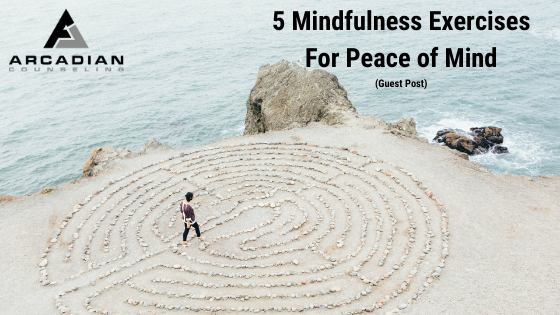Dealing with work, studies, and family obligations while maintaining some semblance of sanity is a tall order, which often leaves people little time to unwind. Fortunately, there are many tools that can help, including the practice of mindfulness.
Mindfulness has proven to be an effective method of managing stress, and you don’t need any special skills to practice it. Most people, however, know little about how to be mindful, which is why simple and clearly explained exercises are so useful.
WHAT IS MINDFULNESS?
Mindfulness is a state of being that emphasizes awareness—noticing one’s surroundings, inner state, bodily sensations, and thoughts. It can encompass several things:
- Bringing your attention to the present
- Being aware of your surroundings
- Noticing your inner sensations
- Accepting the present moment
There is no one way of practicing mindfulness, but having some pointers can be helpful for those just starting. We’ve put together a few exercises to try if you’re ready to explore the practice of mindfulness.
1. FIVE SENSES EXERCISE
This exercise is a favorite among mindfulness practitioners. It can become part of a regular routine, or to ground yourself when you’re overwhelmed or suffering from a bout of anxiety. The first step in most mindfulness exercises is to find a space where you won’t get interrupted for a few minutes. It doesn’t need to be quiet.
Once you’re ready, open your eyes and focus your attention on your surroundings. Make note of five things that you can see.
Second, notice your physical sensations. Notice four things you can feel. This could be the feeling of your clothes against your skin, the pressure of your feet against the floor or the coolness of a breeze.
Then try to notice three things you can hear. The sound of leaves rustling, the hum of a refrigerator or distant traffic noises might come into your awareness.
When you have identified some sounds, notice two things you can smell. This can be a little more difficult, but is excellent for bringing your attention to the present moment.
The last step is to notice one thing you can taste. When you have completed the five steps, take a moment to breathe before continuing with your day.
2. THE RAISIN EXERCISE
The aim of this exercise is to become wholly present and aware of this small object; seeing it properly instead of looking at it without noticing.
Begin by looking at the raisin and noting all the details you see. Try to see the shapes, colors, shadows and highlights as though you’re seeing a raisin for the first time. Next, notice how it feels in your hand. Close your eyes if you wish and feel the textures, dips and folds.
Once you’ve done that, smell the raisin. You might smell other scents too—try to be aware of all of them. When you actually eat the raisin, take time to feel it in your mouth before chewing. Keep directing your attention towards the physical sensations and the different tastes in your mouth. This exercise is precious when learning how to cultivate mindful awareness.
3. BODY SCAN
There are a few variations of the body scan exercise involving different actions and sequences, but the basics are the same. Like the steps in the raisin exercise, the process of a body scan involves focusing your attention on each part of your body, one after the other.
To start, become aware of your feet and try to notice each sensation: are they cold? Hot? Are they resting on the ground? Is the ground soft or hard?
Once you feel present, you can move on to other body parts. Many people go from their feet up, but you can also just notice how your body feels in general, and then pay closer attention to anywhere that stands out. Before going on with your day, take a few deep breaths to conclude.
4. Morning Journal
Many people have kept a journal at some point in their lives, but drop the habit when the busyness of work and “adulting” eats up all your downtime.
Journaling can mean different things for different people, but doing it mindfully requires a degree of awareness. One method is to write a stream-of-consciousness each morning, which is the practice of writing down your thoughts as they happen, without any pause to “make sense” of them. The process is to write and empty your mind onto the page without judgment or censorship. This can help you become aware of your inner world.
Another option is journaling each morning to set your intention for the day and to notice your emotional and mental state before getting down to business. Try to feel your inner sensations as well as the outer, physical ones: do you feel anxious about the day? How does that feel in your body?
The way you start your day has a huge impact on the rest of it, and your waking habits set the tone for what’s to come. A quick journaling session lets you begin with a clean slate and a lot less clutter in your mind.
5. Gratitude Exercises
The concept of gratitude lists has become more popular over the past few years as a way of reminding oneself of positive things even when life is hard.
Just like journaling and the five senses exercise, becoming aware of your gratitude has no set right or wrong method. A simple gratitude practice involves writing a gratitude list every night, in which you think over your day and record three or more things that made your day a little better. These could range from big things, such as getting your dream job, to the smallest moments in your day—waking up in a warm bed or enjoying your lunch more than usual.
A PRACTICE, NOT A TASK
The great thing about mindfulness is that there isn’t one way to do it.
Being mindful is also not something that’s done once. It’s called a “practice” because it takes repetition to develop that conscious awareness. Trying out a few simple exercises can give you a taste of the benefits of mindfulness.
As an editor, Ellen Klein covers topics such as financial management and risk management, as well as health-related topics. She’s a realist and believes that planning for life’s unknowns is best. When she’s not busy with volunteer social work, she can be found scribbling away at her keyboard.

